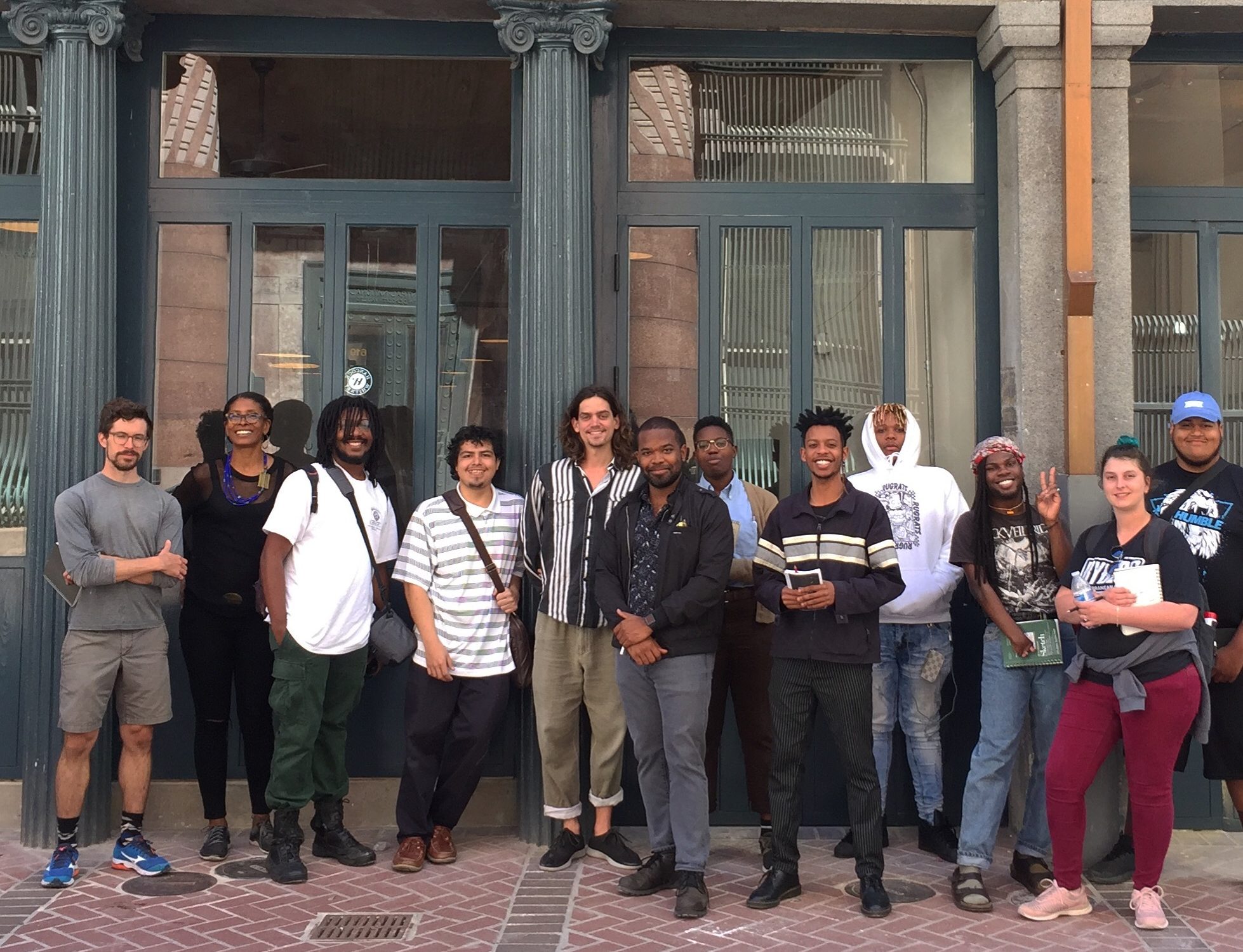Alvarez Spark Innovation Award recipient Christopher Givens has partnered with the local arts organization Beaubourg Theatre to develop programming that engages the local creative community and fosters new work by emerging artists in the city. Chris and David Williams of Beaubourg are collaborating with YEP Design Works to create a design identity and marketing materials for a broad outreach initiative. Chris is a theatre design major and a fellow with the Mellon Program for Community Engagement.
I’m standing on a quiet block of Gravier Street in New Orleans, Louisiana waiting outside of a building whose bricks still bear the name of Thomas Edison in fading white paint. Days ago the empty space was charged with a unique potential: smooth surfaces of freshly laid concrete, wooden panel ceilings, sanded plaster and sheetrock all invited the imagination to dream of what exactly this place could be. Today blue tape on the floors along with a collection of old chairs, tables and stools begins to suggest a developing character although much is still left open. The proposed functions of this space are multiple: the first floor will be a coffee shop during the day and a bar at night, while the second floor will operate as an office space, meeting space, and rehearsal space. These daily businesses will exist alongside and in tandem with the Beaubourg Theater’s aspiration of being a site where a range of performance artists and creative work being produced in all corners of the city can converge and cross-pollinate. A main goal of the theater’s mission is to actively foster the creation of new work by emerging artists in the city and offer an exciting platform for a variety of voices.
This ambitious space has been a dream project of native New Orleanian David Williams for many years. Over the past five years, he has worked with his sister Courtney Williams whose architectural conservation firm Cypress Building Conservation has meticulously cleaned and repaired the ruins of the Edison building, keeping as much of the original structure and materials in tact as possible.
In developing a series of programs with David, our conversations have often hovered over questions around what New Orleans’ arts communities need that the theater might be able to offer. While we have some ideas, what’s been clear is that to begin answering this question it’s important to open our ears and start listening. Part of this listening efforts has begun through our collaboration with YEP Design Works.

In thinking about ways of engaging new audience members, it is essential to think in terms of design and how the public receives information. Our project with YEP was a direct result of our desire to use design thinking to create an on-going relationship with audiences. After sharing these aspirations with two colleagues they recommended that we consider applying for the Alvarez award to fund our initial project.

Our first meeting with the creative apprentices from YEP took place at Beaubourg on a Monday afternoon in mid April. We met the team downstairs where David and Jordan Kaplan, an actor and one of the project’s primary foremen, gave a tour of each floor, describing the vision for how it’s various spaces will be used and providing some historical context for the building and it’s uses over the past 180 years. The apprentices actively engaged us while taking notes and photographs, inquiring about how the various activities of the space will overlap along with who the ideal audiences and patrons will be. Lashaun Crawford, manager of the cafe, explained how the cafe, bar, and performances spaces will be able to merge seamlessly as well as be isolated for particular events. After the meeting, the members of the Beaubourg team were enthusiastic having shared their dreams of this emerging organization with the young and curious minds who we hope will activate it and give it life.

The creative design process continued after this initial meeting with further brainstorming sessions at the YEP Design Work’s headquarters in Central City. Our team visited the apprentices in their studio, a room with about a dozen computers with posters, flyers, and screen prints of various styles and origins hanging on the walls, and together we went through each design. We offered our feedback on each design’s strengths and the interesting directions which they could be pushed towards.

In our process it has been important to be as clear as possible with the design team about what it is that we are trying to do as an artistic organization as well as business enterprise. With YEP, we are creating the foundations of a design identity that we want to represent us accurately. This has meant that the process has been a steady and slow dialogue which aims to arrive at a complete collaboration between our two teams.

